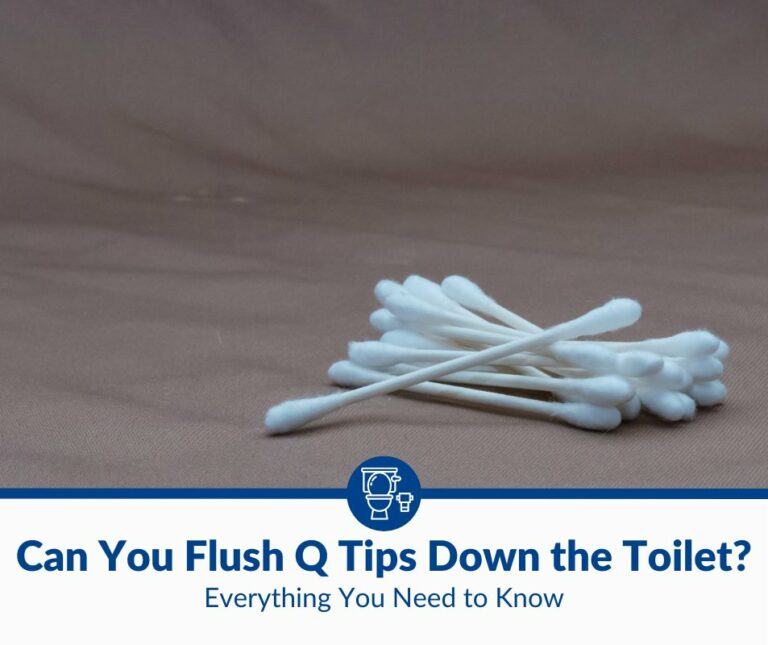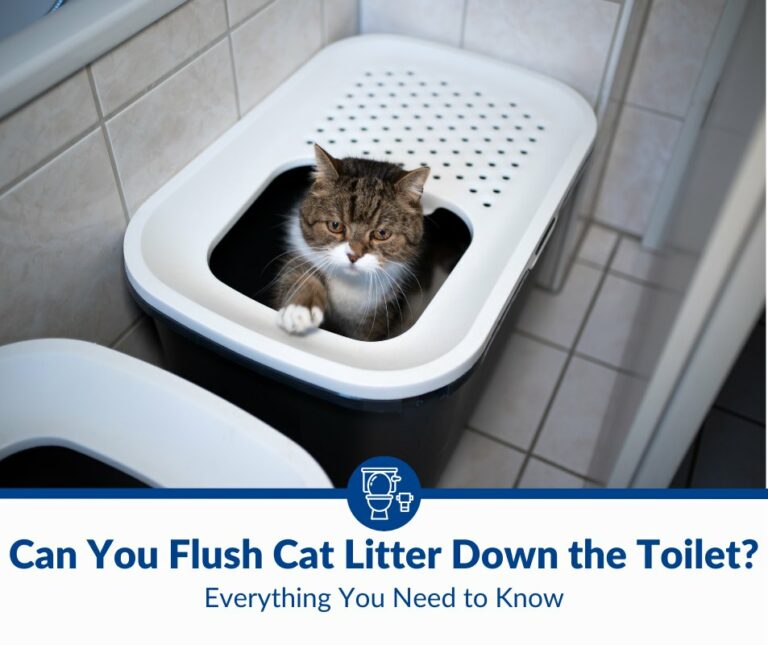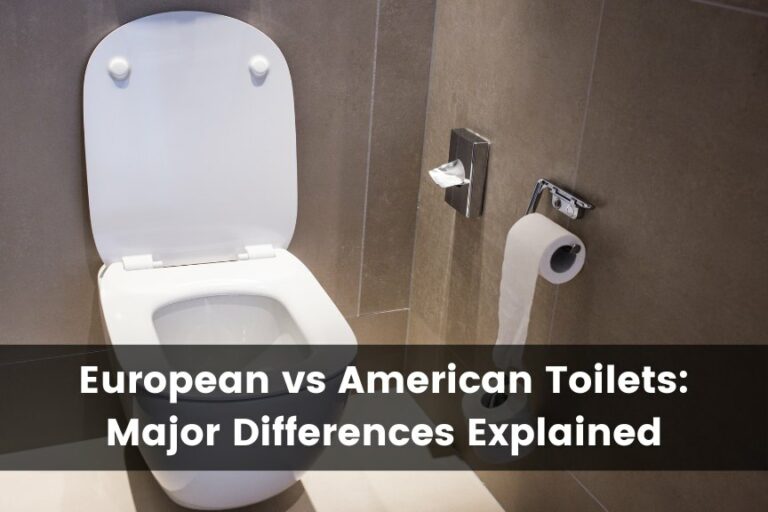Toilet Fill Valve Types: Everything You Need To Know
Flushing toilets have come a long way since their invention in the late 16th century in England. Nowadays, fill valves control the water level in the water tank as it is refilled after flushes. So, what are the different types of toilet fill valves, and how can you choose the best option?
The four main toilet fill valve types are floating ballcock, flapper, piston, and diaphragm. There is also a floatless option. While brass used to be common, plastic is the predominant material used in fill valves nowadays. Plastic diaphragm-type fill valves are a noiseless modern option.
This article will explain the various toilet fill valve types available today. I’ll also review how they work and include tips on choosing the best fill valve for your toilet, as well as a guide to replacing your existing valve.
Different Toilet Fill Valve Types
The various toilet fill valves all serve the same purpose: to control water flow into the tank after flushes. Each type uses a different mechanism and has its pros and cons. The following are the four main types of toilet fill valves.
Floating Ballcock
A floating ballcock fill valve uses a floating ball attached to the feed tube to control the water level inside the toilet’s water tank. Water pressure from the water source opens the inlet valve and allows water to flow into the tank, and the floating ball rises as the water level does. The ball is attached to a lever that turns off the water flow when the ball rises to a certain point.
This type of fill valve is very common and is the oldest type that is still used in today’s toilets. The floating ball and other parts of the fill valve were made of brass in older models but are now made of plastic.
Aside from the choice of brass or plastic floating balls, there are also two variants of floating ballcock fill valves:
- Adjustable ballcock fill valves allow you to control the water level in the water tank via a screw that changes the final position of the floating ball.
- Non-adjustable ballcock fill valves attach the floating ball and the feed tube via a float arm, so there is no room for adjustment.
The main advantage of ballcock fill valves is that they intrinsically keep the tank from being overfilled. Brass balls are more durable but slightly more difficult to install, which is why they fell out of use.
Flapper
A flapper fill valve consists of a rubber plug at the bottom of the toilet’s water tank to regulate water outflow. The flapper is also connected to the handle you use to flush the toilet. When you pull the handle, you raise the flapper, which uncovers the hole at the bottom of the toilet and allows water to instantly rush from the tank to the toilet bowl.
The raised flapper floats in the water that is emptying from the tank and returns to its position when the tank is completely empty, sealing the hole once again so that the tank can be refilled.
An overflow tube is installed to prevent overflow as water pours into the tank. The tube is part of the flushing mechanism that takes in excess water and plugs the inlet valve so that no water overflows.
Although flapper fill valves are relatively common, two major disadvantages have made them fall out of fashion:
- Leaking: The rubber plug is prone to mineral buildup and deposits from hard water that interfere with the proper sealing of the hole at the bottom of the tank. Without proper maintenance, flapper fill valves can start leaking at the bottom of the tank.
- Overflowing: Because the mechanism to prevent overflowing is not intrinsic (i.e., not part of the fill valve), there is a higher probability of overflowing.
Piston
Also known as the plunger-type fill valve, the piston fill valve is different from the other two I’ve mentioned so far because the water fills up from the bottom of the tank. A piston system regulates water flow into and out of the tank, and a floating ball is attached to a brass rod connected to the piston.
When you pull the lever to flush the toilet, the piston opens, allowing water to rush into the toilet bowl. The ball always floats at the surface but drops when water flows out of the tank. After flushing, as the tank fills from the bottom, the ball floats higher and lifts the piston until it closes it and stops the influx of water.
One of the features of this type of fill valve is that you can control the water level according to your preferences. The brass rod connecting the floating ball to the piston can be adjusted to change the water level. You can move the brass rod up to increase the water level or down to lower it.
While this type is very commonly found in older homes, it is more difficult to install because the design involves a hinged lever and joints. However, the heavy-cast brass is relatively quiet and highly durable.
Diaphragm
The diaphragm-type toilet fill valve is available both as a brass body (older) and a plastic body (newer). Both models operate the same way, and this type of fill valve is very popular nowadays. The plastic models are cheaper to produce and are therefore sold cheaper than the brass models. However, the brass body diaphragm ballcocks were considerably more durable.
This ballcock is similar to the plunger (piston) type of toilet fill valve. The major difference is that it controls the influx of water into the tank with a diaphragm instead of a piston. It has a brass rod also connected to a floating ball. As you’d expect, the ball stays at the surface to control the water level.
As the floating ball moves down according to the water level, the brass rod pushes into the diaphragm to allow water to flow into the tank. Once it reaches the maximum level, the brass rod will have moved out of the diaphragm, allowing the diaphragm to stop water from flowing into the tank.
Here are a few advantages of the diaphragm ballcock (plastic or brass):
- The water level is easily adjustable. You can bend the brass rod or adjust the plastic screw to lower or raise the water tank’s maximum level.
- It’s resistant to clogging. The diaphragm isn’t prone to accumulating mineral deposits, so it’s an excellent option if you live in an area with hard water.
- Less leakage: The resistance to mineral buildup also means that diaphragm-type fill valves are less likely to leak.
Despite these advantages, diaphragm ballcocks are falling out of fashion, mainly because they’re difficult to install and may require more frequent adjustments.
Floatless
Finally, the latest innovation in toilet fill valves is the floatless type. Instead of depending on a floating ball (which could easily break or get filled with water), this model depends on a diaphragm fitted with a pressure sensor.
A pressure-sensitive diaphragm is placed at the inlet valve, and the entire ballcock is located at the bottom of the tank. However, this model is highly unreliable and isn’t very popular.
I wouldn’t recommend installing this fill valve for any new toilet, and only mention it in this list so you aren’t baffled if you encounter one.
Parts of a Toilet Fill Valve
Different fill valves have different parts, but the following are the common ones:
- Floating ball
- Brass rod
- Supply tube
- Overflow tube
- Valve
While each part serves the same function across different types of fill valves, it may have slight modifications. For example, the location of a part may vary depending on the type of valve.
How a Toilet Fill Valve Works
Understanding how toilet fill valves work is crucial when troubleshooting problems.
If you look at any toilet fill valve diagram, you’ll notice a few common features:
- An inlet valve
- A mechanism to open the inlet valve after water is flushed down the toilet.
- A mechanism to limit the maximum water level and close the inlet valve.
Generally, a toilet fill valve closes the inlet valve as the water level approaches the maximum, stopping the flow of water into the tank. After flushing, once the water level starts going down, the toilet fill valve opens up the inlet valve and lets water flow into the tank.
Different models may take different approaches to achieve the same result, but the basic principle is the same.
How To Choose the Best Fill Valve for Your Toilet
Given the variety of options available, it’s understandable if you’re overwhelmed. Here are a few questions you should consider before you commit to a choice:
Is the Fill Valve Compatible With Your Toilet?
While most options are universal, it’s always best to check the requirements of your toilet. For example, some models might not be compatible if your toilet has a dual flush system (where you can flush half the tank to conserve water).
Also, you should check the size of the fill valve and compare it to your water tank. Check the models you’re interested in buying against your toilet to find the best fit.
How Easy Is It to Install and Maintain the Ballcock?
If you’re not very handy and don’t intend to hire a plumber, you should buy an option that’s easier to install. For example, piston-type ballcocks are particularly difficult to install, even for some experienced plumbers.
Also, you should avoid models that require more frequent maintenance to keep them functioning properly, such as diaphragm toilet fill valves.
How Durable Is the Model?
Aside from maintenance, you should also consider the durability of the toilet fill valve and compare that with its price. Some models may be cheaper but significantly less durable. This is particularly true with fill valves made of plastic.
Older models made of brass are usually more durable, but they can be difficult to install or have other disadvantages you may want to consider.
Is It of Good Quality?
It may be hard to judge the quality of a toilet fill valve until you try it. However, you can read online reviews of the products from consumers that have used the product before.
Also, you could ask for recommendations from your hardware store clerk. Usually, if the consumers and the store clerk both recommend a product, you can expect it to be of high quality.
It might also help to research the properties of high-quality toilet fill valves and ensure your intended purchase meets them.
The internet can be an excellent research resource. Comparing products from various manufacturers, reading through product descriptions, and hearing from industry experts will be worth the extra effort and time.
On the other hand, if you’re lazy when making a purchase, there’s a higher likelihood of choosing a low-quality product.
What Features Does the Toilet Fill Valve Include?
Although it may be a simple device that we use every day, there are a few features you may want to take into account:
- Adjustment: Some models allow you to adjust the water level according to your needs and preferences. Furthermore, this adjustment is easier in some types than in others.
- Pressure: Consider the water pressure in your house and how much pressure the toilet fill valve can handle. In some types, such as the diaphragm ballcock, the water pressure is a crucial part of the mechanism.
- Noise: Most modern homes attempt to reduce noise levels from standard fixtures such as toilets. I highly suggest using a quiet-fill ballcock if you live in a home with thin walls.
- Water Saving: A few models are compatible with dual flush toilets, allowing you to save money and conserve water all in one.
- Maintenance: Keeping your toilet’s water tank clean is a good practice to keep the toilet fill valve functioning well. Still, some fill valve models are easier to maintain.
Toilet Fill Valve Replacement
Especially if you live in an older house, you’ll find yourself asking whether it’s time to replace your toilet fill valves.
Luckily, if you decide to replace your toilet fill valve, the process isn’t very difficult if you’ve already chosen the replacement valve.
When to Replace Toilet Fill Valves
Before you buy a replacement for your existing toilet fill valve, ensure you actually need to replace it. More often than not, the ballcock simply needs adjusting, and there is no need for a replacement.
The rule of thumb is to replace toilet fill valves once every five years. However, if your fill valve is broken or has too many mineral deposits, you might need to replace it sooner. Here are four signs to look for:
- The toilet fills the water tank with more noise than usual.
- Less water is being flushed into the toilet.
- Refilling takes longer than usual.
- Leaking or corrosion.
If you find any of these problems in your toilet fill valve, it’s best to replace it with a new one.
How To Replace a Toilet Fill Valve
It’s always best to read the manufacturer’s instructions provided with your purchase to ensure you’re installing the toilet fill valve correctly. In any case, these are the general steps you should follow:
- Turn off your water supply.
- Flush the toilet to empty the tank of water.
- Disconnect the water supply feed tube at the bottom of the water tank. You can use an adjustable wrench to do this.
- Remove the mounting nut that connects to the old toilet fill valve.
- Lift the toilet fill valve out of the water tank.
- Place a rubber washer at the bottom of the new toilet fill valve.
- Adjust the fill valve height if possible, ensuring that the tank lid will close on top of it.
- Install the new fill valve by threading the tailpiece into the hole at the bottom of the water tank.
- Ensure that the water outlet nipple is in the direction of the overflow tube (if applicable).
- Thread the mounting nut from under the toilet tank while keeping the new fill valve in place.
- Tighten the mounting nut using your hands, then pliers. Avoid over-tightening.
- Connect the supply tube to the fill valve.
- Attach the water outlet nipple to the overflow tube (if applicable).
- Adjust the toilet fill valve as needed.
- Turn on your water supply, and inspect the toilet as it fills the water tank. There should be no leaks, and it should stop at the designated maximum level.
Final Thoughts
There are more than a few toilet fill valve options available nowadays, with some models older than others. The plastic diaphragm ballcock is the best option, if only for the reduced noise levels.
Even so, the best choice depends on the nature of your situation. For example, if you need to conserve water, you may need to go for one that works with a dual-flush system.
Additionally, some toilet fill valves are easier to adjust but may be harder to install, whereas other models are popular due to their lower prices.







